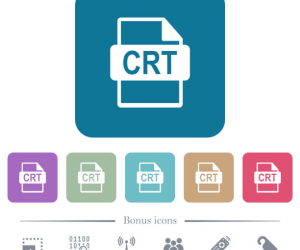Modern businesses are entirely dependent on tech. Without it, they struggle to manage their people, maintain their operations and connect with their customers.
But the question always remains: which tech should you use? The answer is a little trickier than many people realize. Yes, there are a lot of options out there, but which are the best of the best for companies and entrepreneurs? Let’s find out.
Physical Process Automation

All the way back in 2016, Asian ecommerce retailer JD.com proudly showed off what it called the world’s first fully automated warehouse facility. Goods arrived from vendors at one side of the facility, and left on customer delivery vehicles on the other, with hardly a human in sight.
The project wasn’t entirely labor-free – JD.com still had to hire managers and technicians who would oversee operations at the facility. But the reduction in labor was tremendous. The warehouse managed to get by with around 10 percent of the normal number of staff, because of the heavy use of robots. Plus, with a reliable software solution, the whole process ran much more smoothly and efficiently. You can find more details here and see how software solutions can help you streamline your business and warehouse processes. Not only will you be able to save money on labor, but also have better control and visibility over your business operations.
Physical process automation is likely to accelerate this year. It’s now 2022, a full six years after JD.com’s foray into fully automated warehousing. Technology continues to improve, and companies update and upgrade their robotics technology every year.
Around ten years ago, experts predicted that it would be a decade before the robotics revolution took off, and that’s precisely what’s happening. We’re seeing more and more companies invest in this technology as a labor replacement.
Cybersecurity
According to research, around 60 percent of small businesses believe that the likelihood that they will be the victim of an attack is small. However, the figure is actually much larger than that. Virtually all SMEs are potential victims because hackers view them as easy pickings.
As such, 2022 should be the year that small businesses fight back. There are now a plethora of technologies they can use to defend themselves, even if they are operating work from home and BYOB policies.
Perhaps the biggest step forward in this arena is the ability to outsource cybersecurity to third-parties. Companies no longer have to do everything under their own steam. Instead, they can go to agencies that will protect their networks for them, using advanced technologies, not just anti-virus software.
Machine learning is also helping in the fight against hackers. Software is getting better at identifying normal network activity, and flagging any actions that seem abnormal, even if rule-based firewall and anti-virus systems don’t see them.
These methods are helpful for protecting against authorized, yet malicious, actions by employees. It’s also good for identifying potentially dangerous email correspondence and removing it immediately, before it has a chance to enter employees’ inboxes.
Unification Of Software
The average company stands to benefit from dozens of software solutions. However, the challenge today is bringing them altogether. Firms don’t want to operate across multiple platforms because it makes operations less efficient and leads to information siloing.
That’s led to a revolution in software integration. We’re now seeing the emergence of platforms that are trying to create a big tent, under which many different types of software can become a part.
Integration is difficult and requires platforms to add new programs, one at a time. But in 2022, it is a process that is accelerating. Software developers recognize that if they want to be successful, it is in their interest to write code that makes their products easy to integrate.
Achieving seamless communication will likely take a few more years yet, but it is still on the horizon.
Remote Onboarding
Nobody is quite sure at the moment how the work-from-home revolution is going to play out. There’s a general sense that it’s gaining momentum, but it could still go either way.
Even so, remote onboarding is becoming more important. Firms want to be able to hire people from a distance and get them set up, without having to hold their hand for a few weeks in the office.
Onboarding is critical in getting new employees up to speed with their responsibilities and the company culture. Technology is helping to make this happen. Companies are finding ways to use systems to make new hires feel welcome in their teams, even if they are not with them in person.
Technology is making it easier for employees to recognize organizational charts and see who their masters are. It’s also allowing them to make more connections with people around them and build teams from the inside out. Lastly, remote onboarding is providing a process that workers can follow, step-by-step, to get up to speed. This could include direct training, process information, security training and corporate compliance policies.
Employee Engagement Software
These days, firms are struggling to engage and retain their employees. Most workers want to quit their day job and do something completely different.
As a reflection of this, the number of open employment positions continues to rise. In the US, there are now more than 10 million unfilled vacancies, up more than 8 million over the last decade.
Companies, therefore, are turning to employee recognition software. The idea here is to turn employee satisfaction into a process. Firms want to eke out any advantage possible in the labor market so that they can cut their staff turnover and recruiting costs, while also increasing performance and productivity.
Software, for instance, allows employees to receive specific types of feedback that aligns with company policy. For instance, if they demonstrate proactivity and that’s a value held dear by the firm, managers can praise them for it specifically.
Renewable Energy

While nuclear fusion technology is still thirty years away, and always will be, there are other technologies coming onboard that companies are keen to use to fulfill their green agendas. Liquid hydrogen, for instance, is gaining traction in heavy industry. Currently, it relies primarily on fossil fuels to fire its high-energy applications. But that could soon change, once the hydrogen economy gets going. Renewable power could extract hydrogen from seawater to create a CO2-neutral loop for industry.
Regular firms are also seeing their green energy options grow. SMEs don’t have to follow in Apple’s footsteps and install solar panels on their roofs. Instead, all they need to do is join renewable energy schemes, usually with their utility provider. Here, they tell their utility provider that they want to go onto a green plan, and the energy company then hooks them up to solar panels and wind turbines.
Blockchain-Based Business Opportunities
Blockchain has been around for more than a decade now, but it’s notoriously difficult for legacy businesses to understand. The concept of an immutable ledger is alien, and its applications are difficult to envision because it is so radical.
The key to understanding blockchain is that it allows parties to trade with each other without first having trust. The entire edifice of the modern economy is based on trust: trust in money, trust in payments systems, trust in the banking system, and trust in the legal system.
Blockchain essentially does away with this, allowing anyone, anywhere to trade, without first having to know or trust the other person. For businesses, this means that it may be possible to build contracts and pay suppliers, without first having tested them.
Rapid Prototyping
Companies need to make many iterations of their prototypes to ensure that they are suitable for the market. However, that can be a long and drawn out process, not to mention expensive.
Rapid prototyping seeks to get around this. The idea is to churn out multiple versions of a product prototype in quick succession, testing each for its pros and cons. A generative approach lets companies “evolve” their prototypes over time to get closer to what consumers want.
It’s all been made possible through the tremendous advances in 3D printing and fabrication. Companies are finding it easier than ever to churn out new designs at low cost. So while additive manufacturing is not yet ready for mass production, it is now a critical and central technology in the research and development stage.
HR Tech
Thanks to the coronavirus, human resources departments have had to start operating differently. The need for comprehensive software packages that can actually track employees has grown enormously, with trends continuing into 2022. Better centralized HR information has become mission critical in many firms.
Technology is helping to improve this by enabling two-way communication and employee development. There’s a need for software to help with culture, productivity and engagement, with systems in place to navigate these changes.
HR should become more than a system of record. Leaders now need to see their role as creating a system of engagement. They need to abandon old-fashioned HR methods and rethink their approach. That’s where a centralized system can really help.
Conclusion
There are many new business technologies on the horizon, meaning that this is an exciting time for enterprise. Wealth generation will continue into the future and companies will become more productive, all because of better and improved technologies.
Which of these technologies do you plan to use in your business?



